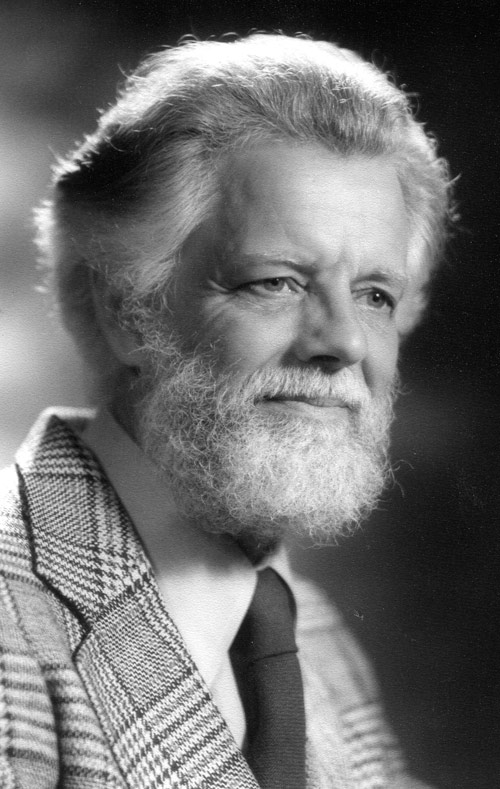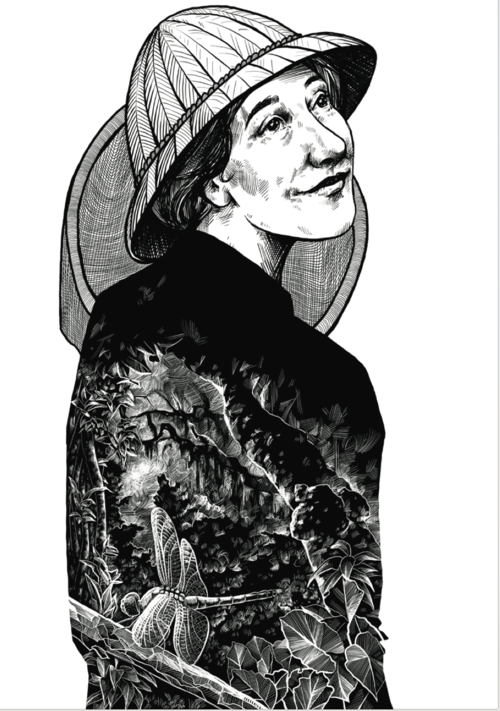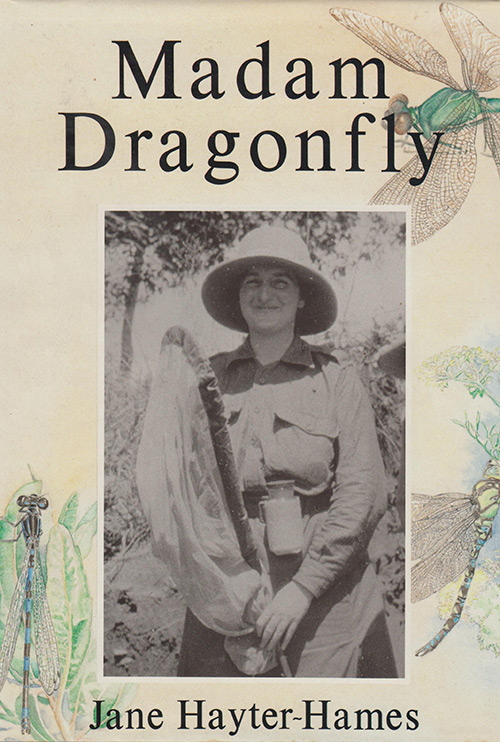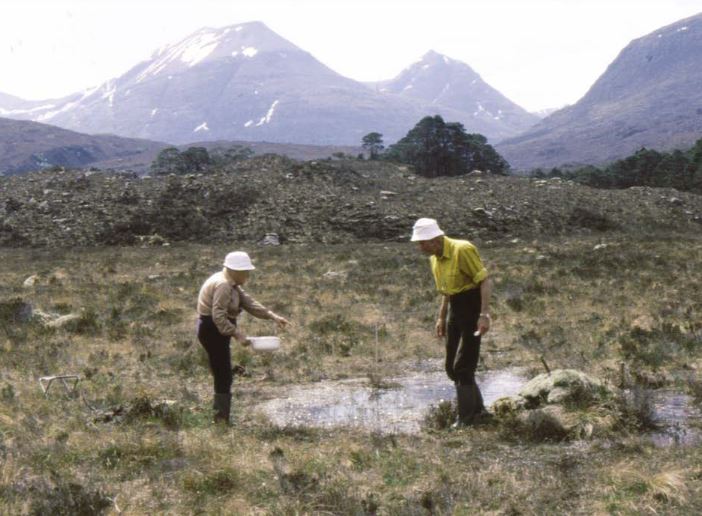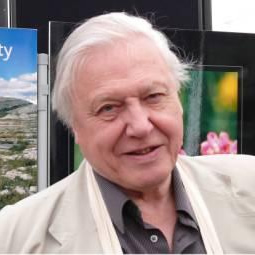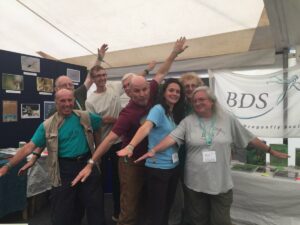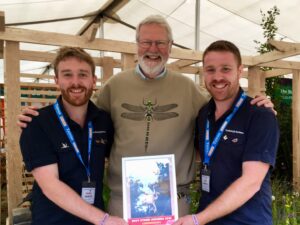Pre-history
Significant milestones that eventually led to the formation of the British Dragonfly Society.
- Feb 1968 – scheme set up by John Heath (BRC) to map the distribution of dragonflies in Britain and Ireland.
- June 1974 – production, by John Heath’s assistant Mike Skelton, of a small booklet of preliminary distribution maps for Orthoptera, Dictyoptera and Odonata in the British Isles.
- May 1977 – publication of the Odonata Mapping Scheme’s first Newsletter by Dave Chelmick, who had recently become appointed as voluntary National Organiser of the scheme.
- 1977 – publication of ‘The Dragonflies of Great Britain and Ireland’ by Cyril Hammond.
- March 1978 – publication of Newsletter No. 2 of the Odonata Mapping Scheme.
- April 7th 1979 – indoor meeting of dragonfly enthusiasts held at the Nature Conservancy Council’s headquarters in Belgrave Square, London, attracted 72 people.
- June 1979 – publication of Newsletter No. 3 of the Odonata Mapping Scheme.
- Spring 1980 – June 1979 – publication of Newsletter No. 4 of the Odonata Mapping Scheme (now renamed the Odonata Recording Scheme).
- June 1980 – informal Recorders’ Meeting at Thursley Common NNR in Surrey, but no indoor meeting this year.
- December 1980 – Bob Merritt becomes Scheme Recorder to assist the National Organiser by dealing with all records.
- September 2nd 1980 – David Chelmick circulated an open letter sent to local scheme organisers and key recorders asking for their views on establishing a British Odonatologists’ Society – about 30 people replied. The initiative to form a society was taken on by Mike Parr and Peter Mill, but not immediately progressed for reasons noted below.
- May 1981 – publication of Newsletter No. 5 of the Odonata Recording Scheme. Bob Merritt suggests that the recording of first and last dates that he and Harry Robinson had been recording in Devon and Cornwall for the past few years be extended to cover the British Isles.
- 1981 – letter to Dave Chelmick from an entomologist (unnamed) who had researched through lists of entomological societies’ members and found about 100 people interested in dragonflies. He proposed to add his list to those names on the mailing list of the recording scheme, with the aim of setting up a society to exchange specimens and promote collecting. Bob Merritt consequently dropped the idea of forming a society based on the recording scheme, because he was worried about the damage that unscrupulous collectors might inflict on our rarer dragonflies. He later noted that loss of habitat, not collecting, was the major threat to dragonfly conservation.
- October 1981 – Dave Chelmick steps down as Odonata Recording Scheme organiser and Bob Merritt takes over.
- Jan 1982 – letter from Alan Stubbs, Nature Conservancy Council, to Dave Chelmick cautioning against a formal society as he felt the recording scheme acted as an informal society anyway and there was no need to add to the administrative burden.
- June 1982 – publication of Newsletter No. 6 of the Odonata Recording Scheme. It was reported that there were doubts about the need for a National Society with concern expressed as to whether it would attract sufficient support to make it viable.
- November 1982 – meeting between Bob Merritt and Peter Mill (with John Bowers present) in Leeds, at Peter’s request. Bob agreed to widen the brief of the recording scheme, within the framework of a Dragonfly Study Group, and produce two newsletters each year, but the latter did not happen at this stage.
- Dec 1982 – meeting between Bob Merritt and Roderick Dunn where advances in printing technology and the ability to produce a professional newsletter were realised. At this point the idea of a British Dragonfly Society was agreed.
- Feb 28th 1983 – Philip Corbet was asked, by letter, to become the first President of the Society. He accepted.
- 1983 – publication of Newsletter No. 7 of the Odonata Recording Scheme.
Formation of the BDS and its first ten years
- April 1983. Publication of BDS Newsletter No. 1. The BDS was officially formed and affiliated with SIO. An initial committee was “formed to oversee the society’s affairs.” and the names submitted to the membership for approval, i,e, Philip Corbet as President, Dave Chelmick as Vice-President, Bob Merritt as Secretary, Roderick Dunn as Treasurer and Peter Mill as Committee Member (and SIO representative). The annual membership subscription was £3. Two months later, the Society had nearly 220 members.
- 1983 – First two BDS field meetings held at Amberley Wildbrooks, Whixall Moss.
- September 1983 – Publication of BDS Newsletter No. 2. Five articles produced in the BDS Newsletter No. 1 were reissued as the Journal of the BDS volume 1, number 1 and back-dated to April, 1983. Not circulated until the end of 1984.
- November 1983 – Publication of BDS Journal Volume 1 No. 2.
- Nov 23rd 1983 – meeting between Peter Mill, Philip Corbet and Bob Merritt in York to discuss the draft BDS Constitution drawn up by Peter Mill. It was later accepted.
- January 1984 – the first issue of the biannual Journal of the BDS was published and distributed, together with a booklet containing the constitution, by-laws and membership list. Membership totals 291 at this point.
- 1984 – committee enlarged by three members; Stephen Coker, Betty Smith and Tony Welstead. Bob Merritt resigned from the committee to be replaced as Secretary by Roderick Dunn. Brian Bailey took over from Roderick as Treasurer and Steve Brooks took on Bob’s former role as Editor of the Society’s publications.
- May 12th 1984 – first indoor meeting of the BDS held at Monks Wood Experimental Station. Subsequent indoor meetings were held annually from 1985 and alternated between the Universities of Leeds and Oxford until 1993. Annual meetings of the committee / Board of Trustees usually followed the next day.
- October 26th 1985 – second indoor meeting of the BDS (at the University of Leeds); the first full meeting of the BDS committee (later the Board of Trustees) was held the following day.
- 3rd April 1986 – publication of Newsletter No. 8 of the Odonata Recording Scheme. Ed. Bob Merritt.
- 1986 – membership fee rises to £4
- October 18th 1986 – third indoor meeting of the BDS (at the University of Oxford); the BDS Dragonfly Conservation Group was inaugurated the following day at the second meeting of the BDS Committee with Norman Moore as Convenor. Other members of the DCG were Philip Corbet, Bob Kemp and Peter Miller.
- May 1987 – publication of Newsletter No. 9 of the Odonata Recording Scheme. Ed. Paul Harding. Britain divided into 5 regions for recording purposes, with Ireland continuing to have its own scheme organised by Colm Ronayne. The initial regional recorders were Betty Smith (Scotland), Stephen Coker (Wales), Lee Thicket (mid and north England), Tony Fox (southwest England) and Noelle and Tony Welstead (southeast England).
- 1987 – first BDS sales item to be offered was a car sticker. Membership about 500.
- 1988 – BDS membership passes 500.
- 1988 – Honorary and Life Membership categories introduced. Cynthia Longfield became the first Honorary Member and was joined later that year by Norman Moore.
- 1988 – BDS becomes a registered charity. Affiliation with the SIO had to cease as a result, but the two Societies remained linked by reciprocal membership.
- 29th October 1988 –1st AGM at Members Day (the 5th) at the University of Oxford; 1st Board of Trustees meeting the following day.
- 1988 – membership fee rises to £5.50
- 1988 – DCG Convenor becomes a member of the Board of Trustees.
- 1989 – BDS Executive Committee established.
- 1989 – DCG meets twice yearly, with one meeting being a liaison meeting with the Biological Records Committee and the Nature Conservancy Council or subsequently its four successor bodies.
- One of the early (1985 – 1988) BDS Committee members, Wilf Nelson, died while carrying out his duties as NNR Warden on the Isle of Rhum. A memorial fund was set up on Rhum.
- March 1991 – the Honourable Miriam Rothschild, CBE, FRS, became the first Patron of the BDS.
- 27 June 1991 – Our first Honorary Member, Cynthia Longfield, died at the age of 94
- 1991 – office of Archivist / Librarian created to preserve records of the Society.
- 1992 – BDS membership passes 1,000. Reciprocal Membership was introduced unofficially for organisations similar in purpose to the BDS.
- 1992 – Philip Corbet became an Honorary Member of the BDS.
- 1992 – BDS field meetings totalled 13 this year.
Years since 1993
-
1993 – Library, Corporate and Associate Memberships introduced.
-
1993 – ‘Managing habitats for dragonflies’ is published.
-
April 1994 – 8th meeting of the Board of Trustees (at the Institute of Terrestrial Ecology) and the first to be held in the spring. Hereafter there were two Trustees meetings each year, one in the spring and one following the Members’ Day meeting in the autumn.
-
1994 – Subscription increases by £1 to £6.50. – Membership stands at 1,326.
-
19th November 1994 – the 11th BDS Members day was held at the University of Cambridge.
-
1995 The BDS decided to set up its own recording system for 15 of our rarer species (Rare Dragonfly Project – but it took another couple of years to get it off the ground) and establish a Migrant Recording Scheme. Adrian Parr took over as Migrant Dragonfly Recorder.
-
March 1996. The Vice-President of the BDS, Peter Miller, died.
-
1996 – publication of first UK Dragonfly Atlas, edited by Bob Merritt, Norman Moore & Brian Eversham.
-
1997 – BDS takes over responsibility for the Odonata Recording Scheme (later renamed Dragonfly Recording Network) from BRC. BDS membership stands at 1,354.
-
1998 – Established the Odonata Records Committee; also the Key Sites Register launched. BDS membership stands at 1,214.
-
BDS website launched mid-1998 by George Mahoney and hosted by him.
-
Spring 2000 – BDS website gains its own web address at ‘dragonflysoc’.
-
April 2001 – Conservation Officer (Charlie Murray) employed as first BDS member of staff.
-
August 2001 – BDS attends the annual Birdfair for the first time.
-
2002 – Education pack published.
-
2003 2nd Conservation Officer (Caroline Daguet)
-
July 2004 – BDS starts venturing abroad on group trips. Bulgaria and subsequently Sri Lanka, South Africa and Panama.
-
January 2005 – First Patron, Dame Miriam Rothschild, dies.
-
March 2005 – Key Sites Project Officer (Graham French) employed as second member of staff to manage data.
-
2007 – Dragonflies in Focus Project launch, Officer (Steve Prentice) appointed, replacing Key Sites. 3rd Conservation Officer (Kat Parkes)
-
2007 – Norfolk Hawker added to Biodiversity Action Plan list.
-
2007 – First volume of the ‘Field Guide to the Larvae and Exuviae of British Dragonflies’, by Steve Cham, published (Dragonflies).
-
2007 – Sir David Attenborough becomes new Patron.
-
2008 – Revised Odonata Red Data List written by BDS and published by JNCC.
-
July 2009 – Dragonfly Centre established at Wicken Fen in Cambridgeshire (partners Dragonfly Project, National Trust) Opened by TV presenter and naturalist Chris Packham.
-
2009 – BDS magazine became full colour. 4th Conservation Officer (Claire Install).
-
2009 – First indoor meeting in Scotland held at Napier University in Edinburgh.
-
2009 – Second volume of the ‘Field Guide to the Larvae and Exuviae of British Dragonflies’ published (Damselflies) .
-
2010 – Strategy Workshop held in February – 18 attendees
-
2010 – Strategy output presented at Recorders’ Day in March
-
2011 – New BDS website launched.
-
2011 – First Chief Executive appointed (June).
-
2012 – Updated and combined volume of the ‘Field Guide to the Larvae and Exuviae of British Dragonflies’ published.
-
2013 – 30th Anniversary Year. Jersey Post produced set of 6 Dragonfly Stamps.
-
2013 – First part-time Scotland Officer (Daniele Muir) employed.
-
2014 – Publication of the new UK Dragonfly Atlas in May. Dragonflies in Focus Officer becomes First Records Officer, works part-time.
-
2014 – BDS receives first part of the substantial Reece Watts legacy (~£52,000)
-
2015 – Appointment of 5th Conservation Officer (Genevieve Dalley). First e-newsletter published. 2nd Part-time Records Officer (David Hepper).
-
2015 – BDS receives final part of Reece Watts legacy (~£97,000)
-
2016 – BDS becomes a Charitable Incorporated Organisation (CIO)
-
2016 – New President: Naturalist, TV personality & author Mike Dilger.
-
2017 – Appointment of first part-time Fundraiser (Sarah Miller), 6th Conservation Officer (Eleanor Colver), 2nd Scotland Officer (Andrea Hudspeth).
-
2018 – Appointment of First Conservation Outreach Officer (Fiona McKenna). Launch of first English BDS Dragonfly Hotspot at Shropshire Hills.
-
2019 – Joel Ashton becomes the first BDS Ambassador, followed later by Green-fingered George (George Hassall). Three more English Hotspots launched at Stover Country Park, Rodley and Thursley Common.
-
2020 – BDS held its first online Spring and Autumn Meetings, plus its first online AGM. Covid pandemic caused the cancellation of most BDS Field Meetings. Virtual launch of Paxton Pits as a BDS Hotspot. BDS grew its social media presence and launched PondWatch as an online event.
-
2021 – Scottish Conference held online (postponed from 2020). State of Dragonflies in Britain and Ireland 2021 Report published in September. Two further BDS Dragonfly Hotspots launched at Whisby and Exbury Gardens. BDS obtains a grant to create and restore ponds for Northern Damselfly, plus a grant to help expand our volunteer base in Scotland. BDS wins the John Sawyer NBN Open Data Award 2021.
-
2022 – Appointment of 2nd Conservation Outreach Officer (Lauren Kennedy). Another English BDS Hotspot was launched at WWT Steart Marshes, plus our first in Wales at Llangorse Lake. New five-year BDS Strategy 2022-2026 started. New partnership agreement to 2025 to benefit dragonfly habitats made between BDS and Forestry Land Scotland.
Some Notes for Information
ORS Newsletter No. 6 was published in June 1982. After this they become a bit difficult to follow as there are three that are not numbered:
- One dated ‘1983’, which is presumably No. 7. Ed. Bob Merritt.
- The next is ‘3rd April 1986’ – presumably No. 8, so nothing in either 1984 or 1985 Ed. Bob Merritt
- ‘May 1987’ Ed. Paul Harding – presumably No. 9.
- No. 10 May 1988 Ed. Bob Merritt.
Title image: Griffinfly fossil by Alexandra Albore

